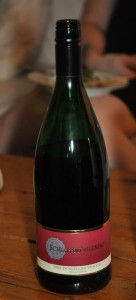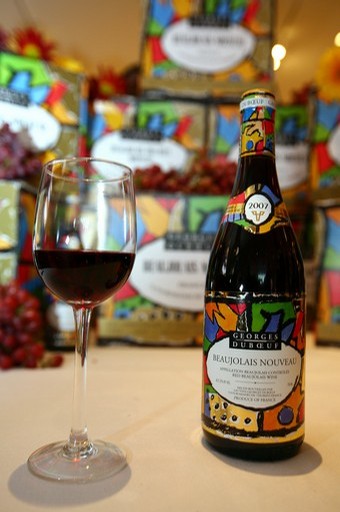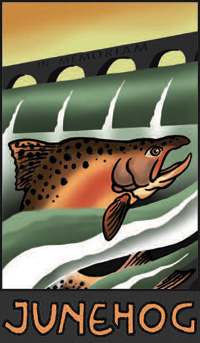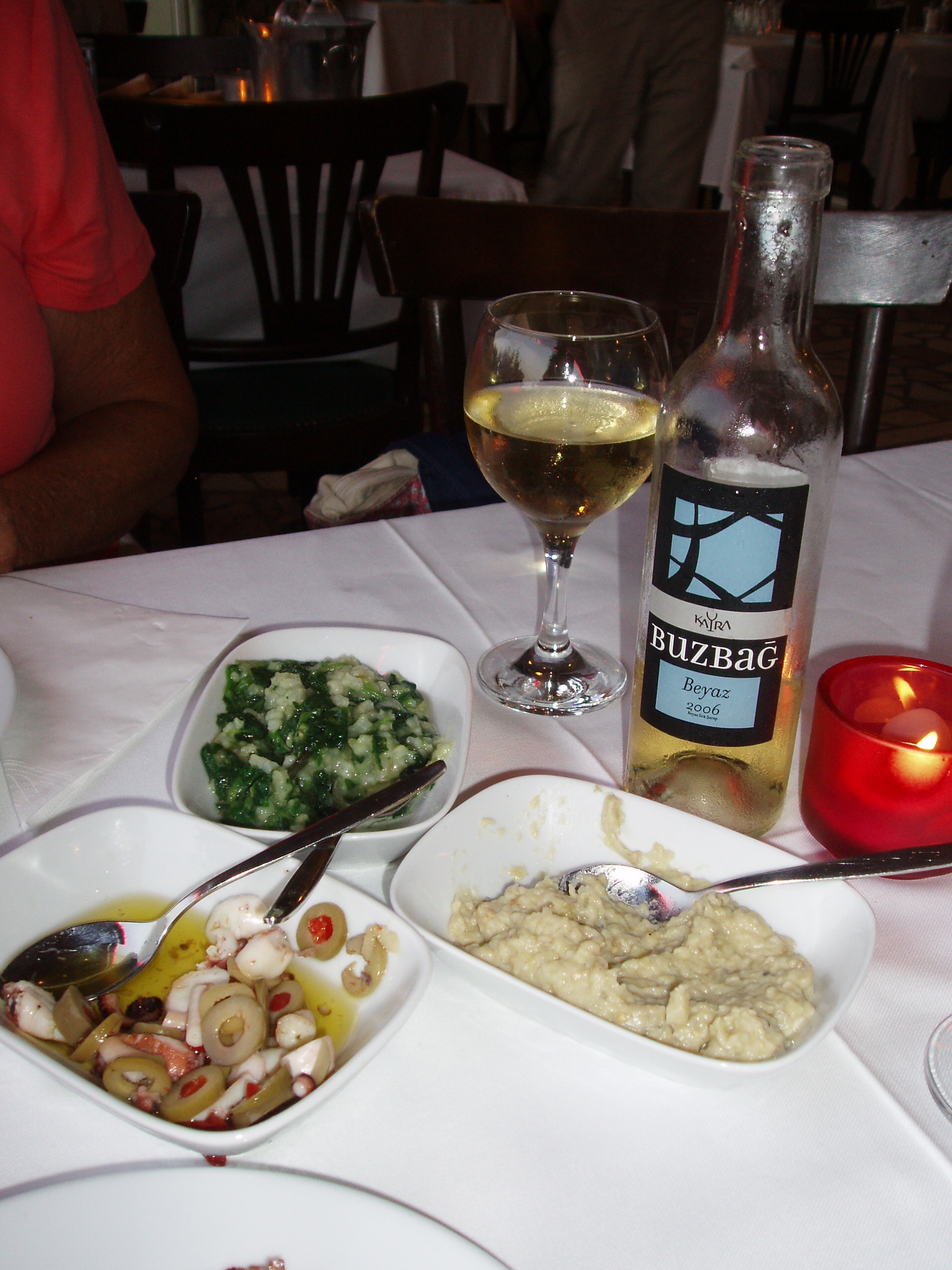 With only one weekend before Thanksgiving remaining, no doubt wine lovers throughout the country will be out and about buying wines for the big event. Indeed, it's up there as far as important wine events go! For your drinking (and reading) pleasure, it seemed prudent to round up a few of my favorite picks for the e-roster.
Wheeee!!
With only one weekend before Thanksgiving remaining, no doubt wine lovers throughout the country will be out and about buying wines for the big event. Indeed, it's up there as far as important wine events go! For your drinking (and reading) pleasure, it seemed prudent to round up a few of my favorite picks for the e-roster.
Wheeee!!
REDS
2007 Schloss Muhlenhof Dornfelder - This bad boy comes in a 1L size. I hosted a small affair last weekend and it could have easily been the only wine I poured (it was gone WAY too quickly!) - offering great, concentrated red berry fruit flavors (cherries, raspberries) in a smooth, sultry package. Generally speaking, this grape (Dornfelder, that is) is a German red wine phenomenon for those who like a lot of fruit, a bit of "lift" and a welcome bit of earthy, mineral-driven nuance to their wines. No lie, Scholss Muhlenhof's is THE BEST I've ever encountered (so great is my love I'm tempted to buy a full case of the stuff to have on hand "just in case..." this winter). The extra glass the 1L size offers will NOT be wasted. Only $15!
2006 Bethel Heights Eola-Amity Cuvee Pinot Noir - A careful blend of 6 different vineyard sites, the is a tremendous, mouth-filling example of Oregon Pinot Noir. Think of this wine as a smooth, deeply earthy Belgian truffle, filled with cherry and raspberry fruits. Truly a well-integrated, delicious wine worth the gentle splurge. (A winner destined for my own table.) About $31.
2007 Clos la Coutale Cahors - With the (worthy) Malbec craze stemming from the success of this grape in Argentina, many consumers forget Malbec is actually a French varietal. Many more do not know that arguably the best, single bottling Malbecs in France come from the Cahors region – and are labeled simply as such. This wine is remarkably succulent, juicy and approachable. Enjoy black raspberry and blackberry flavors complemented with fresh strawberries! A touch of earthy rusticity makes this Malbec uniquely French. This one is a "bigger" wine than "traditional" Thanskgiving recommendations and would be a particularly good match for rosemary/garlic encrusted roast hen, or the like. About $17.
WHITES
Schoenheitz NV Edelzwicker - Edelzwicker means "noble blend". Indeed this wine includes as many as seven different varieties from Auxerrois to Sylvaner. The result is suprisingly coherent and delightfully flavorful. Well balanced, dry Alsatian goodness, this is another wine that comes in the 1 litre size bottle. About $15.
2006 Clos de Rochers Pinot Gris - While Alsace, France has long been the place for rich, but dry Pinot Gris, this Luxembourg beauty beats them at their own game. Ripe pears and yellow flowers abound on the nose and coat the palette while brisk minerality keeps things dry and balanced. This wine is absolutely worth the splurge – and certainly a great conversation topic if the family gets a bit unruly. (This one will also be on my own table!) About $22.
2007 Anne Amie Cuvee A Mueller Thurgau -Leave it to the folks at well-known Anne Amie Vineyards to deliver an exceptional, if not lesser known, wine. The Cuvee A Mueller Thurgau’s tropical and floral aromas could very easily be bottled on their own and used by aroma therapists to rejuvenate clients. Pineapple, melon and white peach flavors comingle with a perky taste of fresh lemon juice. About $15.
SPARKLING FUN
Villa di Corlo NV Grasparossa Lambrusco - Versatile, slightly sparkling, fresh, fruity goodness. Lambrusco is pink - and the best are oh-so-dry. This is a wine for guests who deserve and enjoy a break from the norm. This particular offering shows ripe raspberry fruit backed by a coy minerality. Perfect simply when you want to dazzle without effort. About $17.
Poema NV Brut Cava - Today, if you look for it, exceptional Cava is available at a fraction of the price of Champagne. Case in point: the Poema makes drinking bubbly every day (or in a large party format) oh-so-easy and affordable! This is a fun and versatile bubbly with subtle flavors of peach, pear and warm, toasted bread. A bit of orange rind on the finish adds additional intrigue and nuance. Enjoy this one before, during or after your meal. About $11.
Which one of these is likely to grace your table? Is there another you have in mind for the big day??



 White wines aren't just a summer thang. (One of the best turkey wines is actually
White wines aren't just a summer thang. (One of the best turkey wines is actually  I first had the opportunity to vacation on the lovely (Turkish) Cyprus island two years ago when my friend invited me to stay with her family for a couple of weeks. Whether it was because Turkey is largely a Muslim nation or because my friend's parents don't imbibe very often, drinking wasn't a big part of that trip. I tried Raki once - a strong, clear brandy that tastes of anise - but was not a fan, as my nephew would say. I also remember trying a glass of red wine at a Beer Garden there and found it almost undrinkable. It was so acidic and unbalanced I was happy to stick with the thirst-quenching Effes beer that dominated nightspot venues.
This summer we were visiting for the same friend's wedding celebration and decided to spend a few days in Istanbul on the way. The first night we were there we saddled up to a local
I first had the opportunity to vacation on the lovely (Turkish) Cyprus island two years ago when my friend invited me to stay with her family for a couple of weeks. Whether it was because Turkey is largely a Muslim nation or because my friend's parents don't imbibe very often, drinking wasn't a big part of that trip. I tried Raki once - a strong, clear brandy that tastes of anise - but was not a fan, as my nephew would say. I also remember trying a glass of red wine at a Beer Garden there and found it almost undrinkable. It was so acidic and unbalanced I was happy to stick with the thirst-quenching Effes beer that dominated nightspot venues.
This summer we were visiting for the same friend's wedding celebration and decided to spend a few days in Istanbul on the way. The first night we were there we saddled up to a local